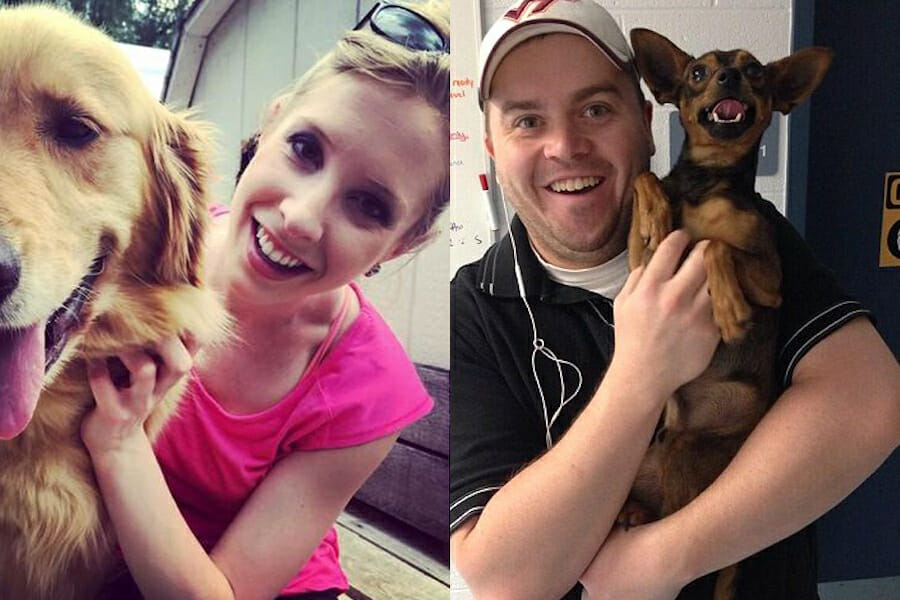
Media
Virginia TV Shootings: Murder as a Media Event
The macabre live murders of Alison Parker and Adam Ward in Virginia are a chilling watershed. Whatever the shooter’s motivations, the idea that journalists are targets for infamy seekers is now an idea in our culture.
Reports that the alleged shooter, Vester Flanagan, praised other rampage murderers connect this new outrage to an all-too-familiar theme. Here’s another example of gun crime as a media event. Murder as a script that murderers can easily act out for the world.
At first blush, we might wonder what such screened outrages do to evil, alienated and vulnerable people. Fair enough. But what about journalists and their profession?
That Parker and Ward’s colleagues were forced to instantaneously cover the slaughter of their own friends was a cruel exemplar of a more mundane truth: in the digital age, news is a live performance. WDBJ7 TV anchors were mercilessly obliged to balance trauma and professionalism; staying calm while grieving friends, and perhaps wondering why local news had become mediatised terror.
Unfortunately, there are many reasons to think that this unimaginable situation reflects global realities in news production.
Beyond the shock of the ghastly crime, the talk among journalists is about the upping of an ethical ante in a profession already facing unprecedented pressures. Sky News UK discussed the ethics and pragmatics of dealing with the footage of the crime. Different organisations have said “cut” in different places. The Daily Star, for example, showed images that Sky eschewed.
Since these images were already circulating social media, the question “whither ethics?” in a Twitter age, has been raised.
Today, there’s a terrible feeling that gates have been left open and horses have bolted over fields. If someone wants to create panic with a gun and a smartphone, they can. If journalists want to protect the public from disturbing images, they can’t. This is precisely why professional journalism is every bit as important as it has ever been.

So let’s appreciate that profession. Parker’s death poignantly illustrates one of the most significant findings of comparative journalism research – that journalism is a dangerous job, and those dangers often have a gender dimension.
Following the invasion of Iraq in 2003, job opportunities for local journalists abounded, largely because the role was too dangerous for those who had other options. Between 2003 and 2009, 139 journalists were killed in the Iraqi conflict, of whom 117 were Iraqis.
Things were especially grim for women: attracted to journalism by high pay and high unemployment, they were threatened by the “double dip” risks of being Iraqi and female.
Naturally there’s a world of difference between reporting on Fallujah and telling a local news story about tourism. Except, in both cases, the stories are told by people who have to negotiate a complex maze of technical skills and professional attributes in competitive markets where, in the end, the difference between good and bad depends on the skill of the person on the spot.
Seen this way, the dilemma the WDBJ7 news team faced was a savagely amplified version of the “problem” that journalists always face in stories that matter. Common sense dictates objectivity as the bottom line of good journalism. But evidence contrarily identifies subjectivity as the cornerstone of reporting excellence. A study of Pulitzer Prize-winning writers revealed the ability to infuse stories with personality and emotion as a common trait.
We want our news to come from people who care about things, and know how to show it.
In a way, these “live” murders aren’t an aberration, in terms of the news processes. Forty years ago, media academics were keen to discover how journalism worked behind the scenes. Today, it happens on our screens; news teams struggle to edit and make sense of events as they happen, and stay cool as social media users break whatever story they want to break. Threats to journalistic integrity are legion.
Which is why good journalists matter so much. When you let us all tell our own stories, we screw things up. Critics say we live in a “post-truth” culture. Stories matter more than truth, and technology ensures that everybody’s got one. And can tell it. Everything gets reduced to screen images, so when we see the image of a murderer captured on a fallen camera, we think about The Blair Witch Project, not the death of a person.
Inevitably the days that follow will be filled with stories about copycat fears and gun culture. In this, let’s not forget the effects on journalists and the difficulties they face in protecting a job that isn’t just another kind of storytelling.
This article was originally published on The Conversation. Read the original article.
